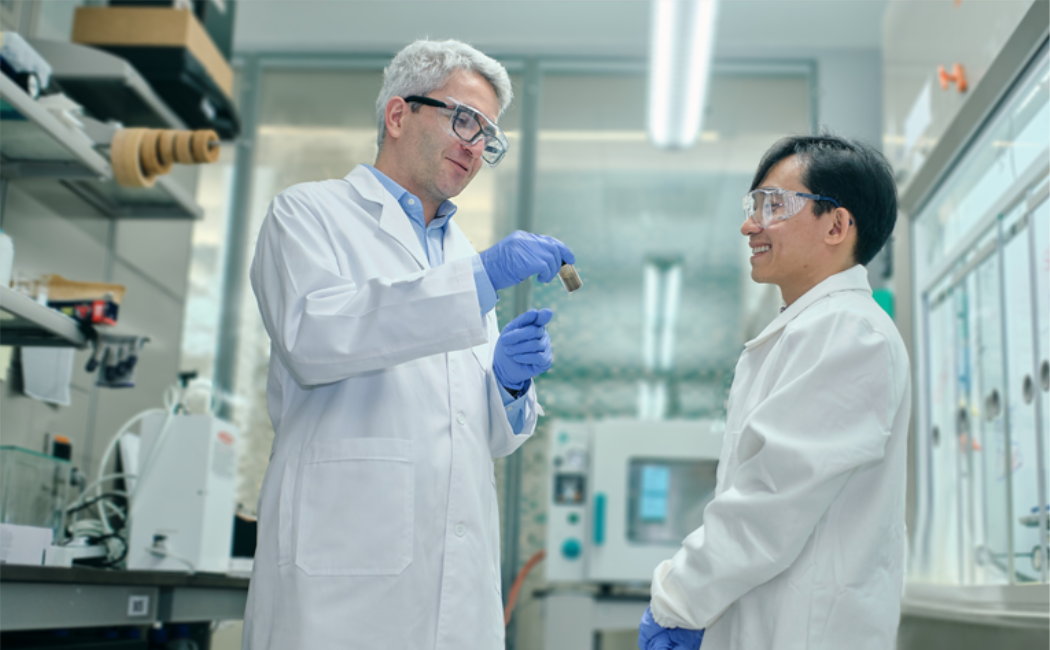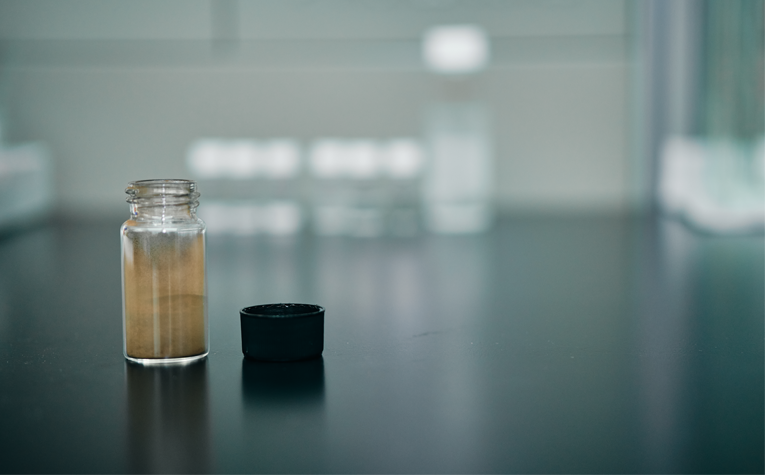
03 July, 2023
KAUST Professor Cafer Yavuz (left) and research scientist Thien Nguyen have developed a porous organic polymer that can remove organic micropollutants and toxic mercury ions from water. © 2023 KAUST; Eliza Mkhitaryan.
A facile technique for reproducibly creating Swiss-cheese-like nanomaterials has been developed by researchers at KAUST. This material, and the method required to create it, could help in the development of further advanced materials with applications in photocatalysis and optoelectronics.
Porous materials are low-density solids characterized by having a lot of empty space within the bulk of the substance. These voids give porous materials a very large surface area, which is excellent for adsorbing other chemicals and acting as an enhanced catalyst for chemical reactions.
Porous organic polymers, or POPs, have shown particular promise for these applications because of their high porosity and their chemical and thermal stability, as well as the flexibility to tailor chemical response to capture specific target molecules and enhance selected reactions.

The team will work with the electronics industry and water treatment facilities to prepare large-scale batches of their polymer (pictured here) for electronic or photocatalytic applications. © 2023 KAUST; Eliza Mkhitaryan.
Cafer Yavuz and colleagues from KAUST, collaborating with co-workers from Korea and the U.S., have demonstrated a simple “one-pot” catalyst-free process for creating a highly porous POP called poly(aryl thioether)article " id="return-reference-1" href="https://discovery.kaust.edu.sa/en/article/21235/a-better-way-to-create-space/#reference-1">[1]. “We’ve shown that polyarylthioethers can be produced simply from sodium sulfide and perfluorinated aromatics,” says Yavuz. “We believe that we have uncovered a powerful strategy that went against common understanding and could be used to build sulfur-based materials in a tunable fashion.”
Read more at KAUST Discovery.